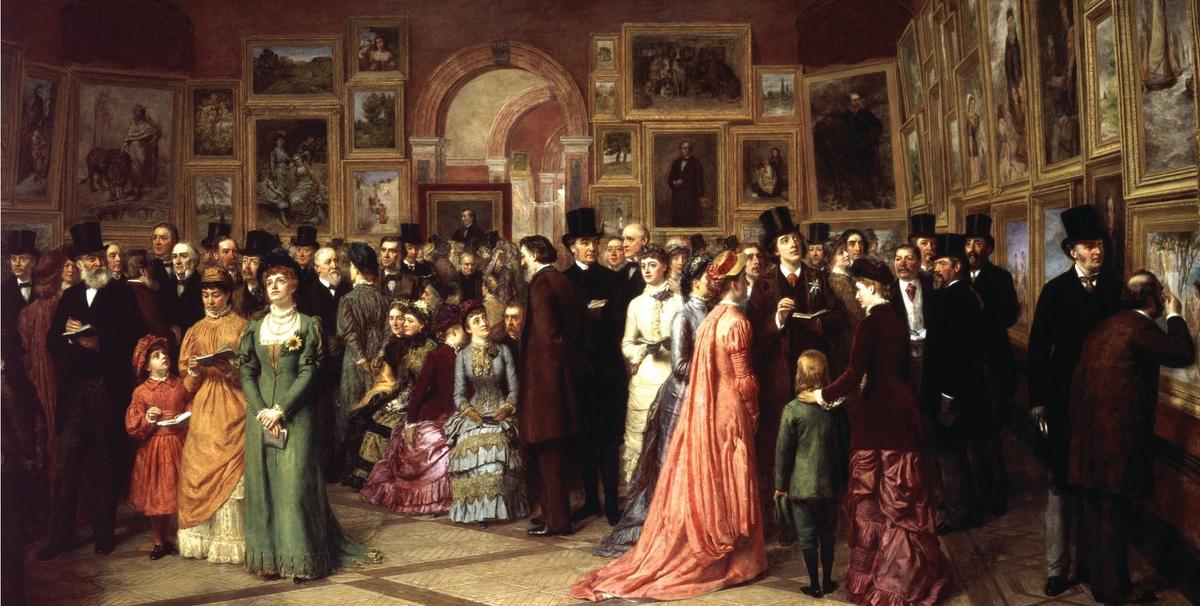It was the setting for the fiercest rivalries in British art, the place where the country’s finest artists would reveal their creations in direct competition with one another. The Royal Academy of Arts’ (RA) annual Summer Exhibition, once the grandest social occasion of its day, is where Reynolds and Gainsborough, Turner and Constable, and many, many more, would battle for the public’s attention and for highly coveted exhibition prizes. In 1832, when a seascape by Turner was hung alongside a canvas by Constable that brilliantly captured the effects of sunlight, Turner improvised: he added a bright red buoy to his own painting, its dazzling colour outshining anything in his rival’s work.
The Summer Exhibitions represent the world’s longest-running series, with an unbroken record since 1768, and in 2018, the RA will mark its 250th anniversary by recounting many of these famous controversies in a historical show tracing the story of its development. Although not yet announced, the show will be called The Great Spectacle, reflecting how it was regarded by 18th-century London society.
Alongside The Great Spectacle, the 250th Summer Exhibition will be the largest ever, spilling over from the academy’s Main Galleries into the Sackler Wing. Visitors will then use a walkway that is currently under construction to reach the Burlington Gardens building, where the show will finish in three rooms on the upper floor.
The artist Grayson Perry, elected an Academician in 2011, will co-ordinate the hanging committee for the Summer Exhibition 2018. Speaking to The Art Newspaper, Perry said he is looking forward to the project “with excitement”. Charles Saumarez Smith, the academy’s chief executive, promises that the 250th exhibition will be “even bigger and more celebratory than usual”.
Saumarez Smith admits that historical exhibitions about institutions can become “a bit narcissistic”, so the academy invited two external curators to organise The Great Spectacle: Mark Hallett, the director of studies at London’s Paul Mellon Centre and an 18th-century specialist, and Sarah Turner, the centre’s deputy director for research and a 19th- and 20th-century specialist.
Not just a parade of masterpieces Hallett describes The Great Spectacle as “a journey through the history of the Summer Exhibition—and the history of British art”. The narrative will be told through 115 works (90 paintings, plus 25 sculptures and works on paper). Nearly all the works, from a wide variety of museums and private collections, were once exhibited at the academy. (A few rejections will also be displayed.) Hallett says that it will “not just be a parade of masterpieces, but every work will have its own story”.

The Great Spectacle will begin, appropriately, in the suite of Fine Rooms at the front of Burlington House, dating from the 18th and 19th centuries. The show will open with a focus on Georgian portraits, with important works by Reynolds and Gainsborough. The circuit will then continue to the Weston Galleries, with 19th-century paintings, and the first two of the Main Galleries, for the 20th century. The final room will cover the period from the 1997 Sensation exhibition with works by the Young British Artists up to the present. This will include pieces by R.B. Kitaj, David Hockney, Michael Craig-Martin and Yinka Shonibare. Altogether there will be ten rooms, each covering a roughly 25-year period.
This approach will explore key moments and events in the Summer Exhibition’s 250 years, focusing on the high points (and occasional low points). Although precise figures have not yet been calculated, this series of shows may have presented around 250,000 works of art and may have been seen by well over 25 million people since 1769.
Democratic experience of fine art It is an astonishing achievement that the Summer Exhibition has survived for 250 years. Hallett says this is because the show is “attached” to an institution, the RA. “The works on show have always been a combination of those by well-known Academicians and not-so-well-known outsiders. Visitors love that sense of variety,” he explains. As Saumarez Smith puts it: “In the 1760s, the Summer Exhibition broadened the democratic experience of fine art—and in my view, it still does so.”
The 2016 exhibition attracted 229,000 visitors, an excellent number for a two-month show. Next year, with the anniversary, it should do even better—but it will struggle to break the record of 391,000 in 1879.
Meanwhile, this year’s show runs until 20 August. Of the 12,000 outside submissions, only a small proportion made it onto the walls. There are 1,200 works (including 514 by Academicians, Honorary Academicians and invited artists) now on display, ranging from the highly traditional to the cutting-edge.
• The Great Spectacle: the Royal Academy and its Summer Exhibitions 1769-2018 and the Summer Exhibition 2018, Royal Academy of Arts, London, 12 June-19 August 2018


